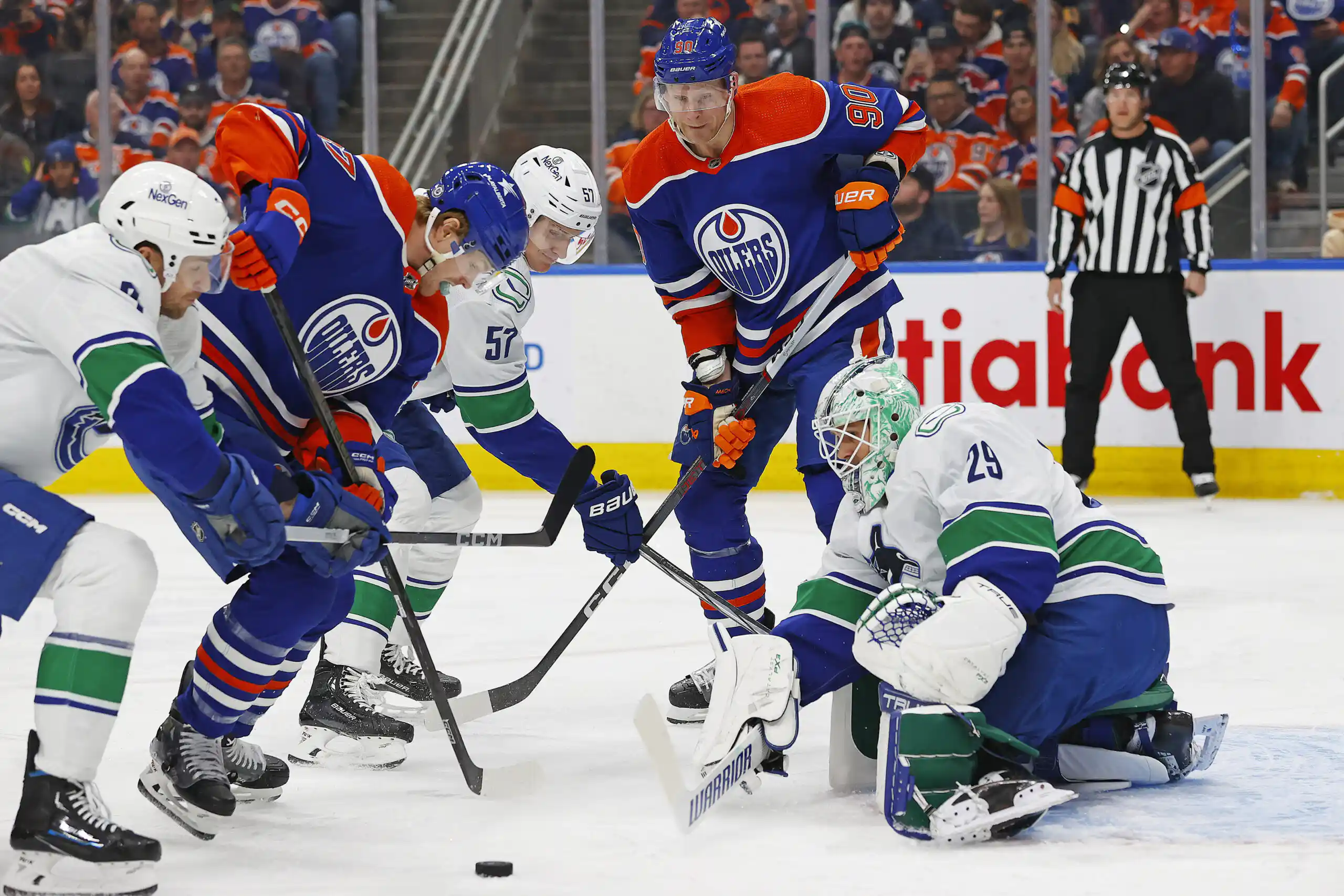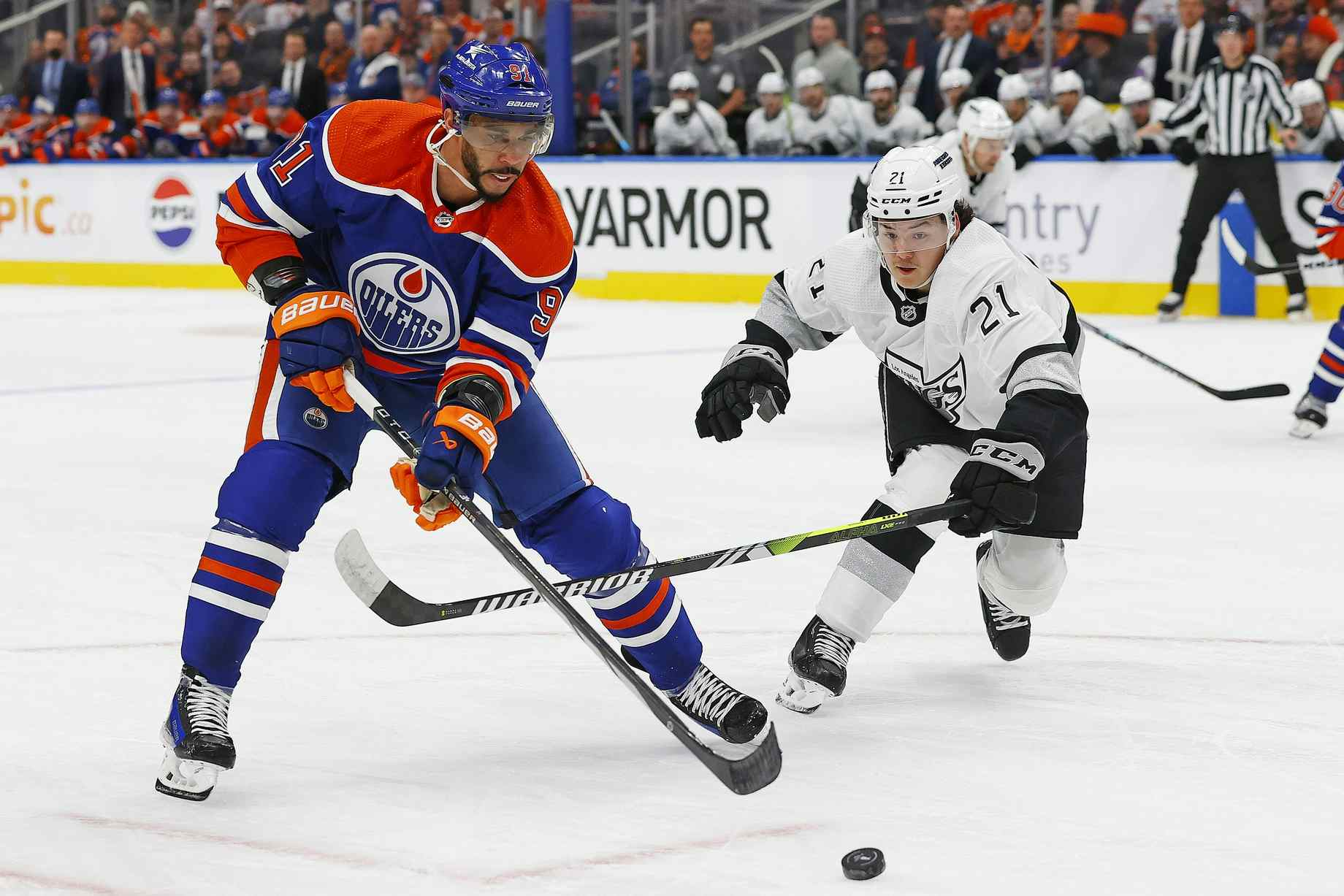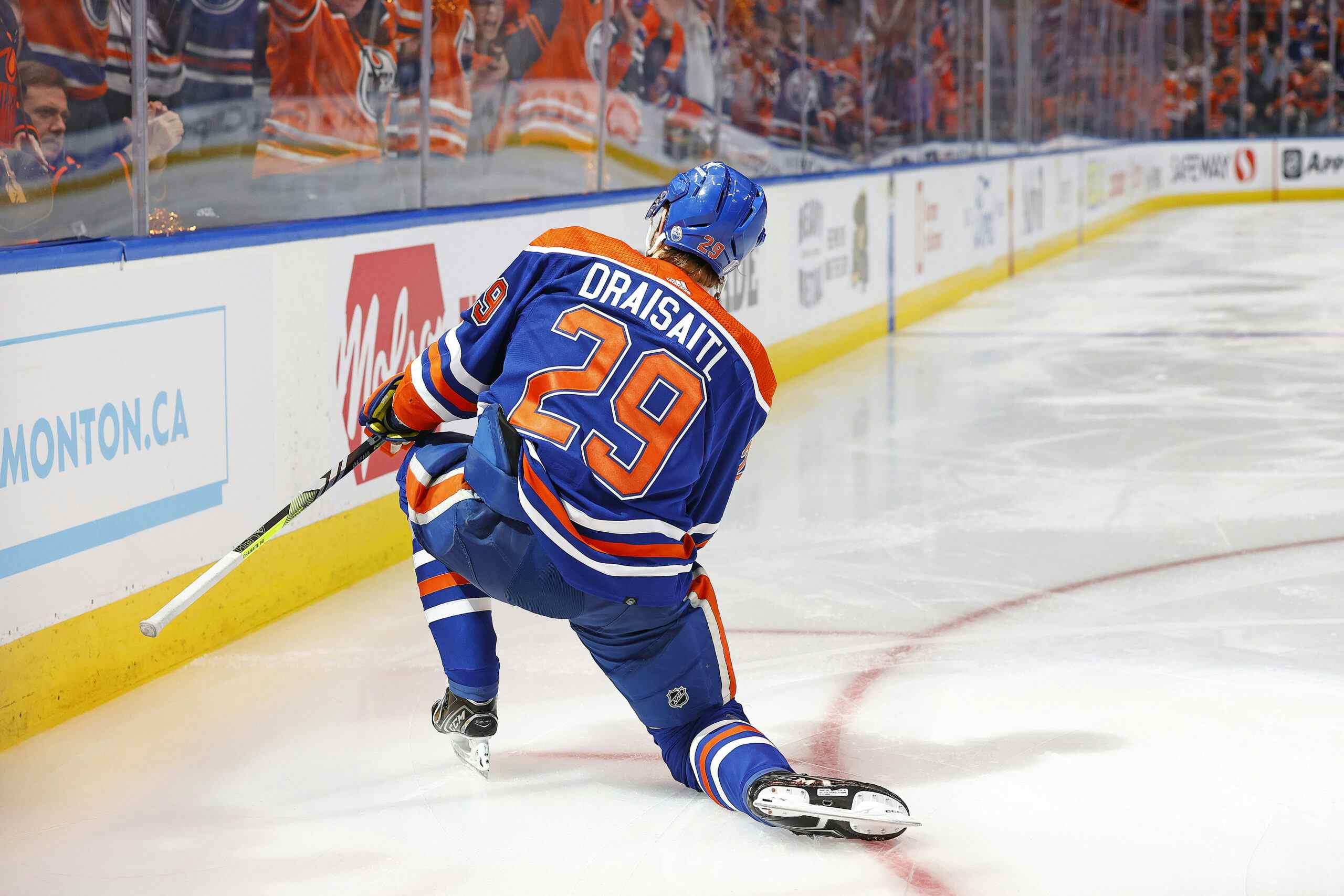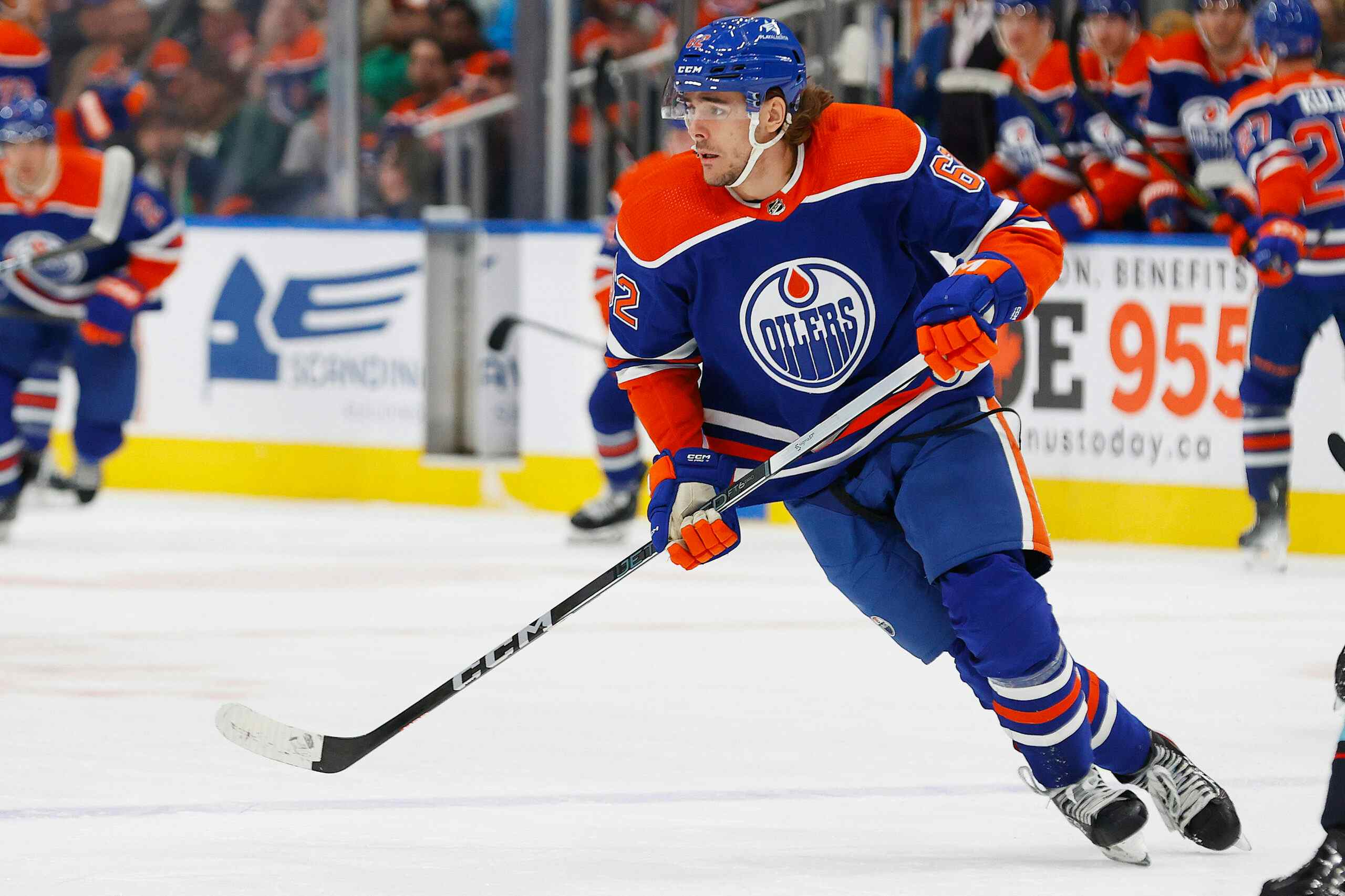How we got here: a brief history of the post-Sather Oilers

When Glen Sather left the Edmonton Oilers for a job in New York in 2000, it was a major milestone for the club. Head coach Kevin Lowe replaced Sather at the helm and launched the current era of Oilers’ history.
The Early Years: 2000-2004
When Lowe replaced Sather as general manager, he immediately set about ushering in changes. He replaced himself as head coach with Craig MacTavish, and around the same time put Kevin Prendergast in charge of the amateur procurment department, replacing the departing Barry Fraser..
This group operated in difficult financial circumstances, and honestly probably don’t get the credit they deserve over this span. The Oilers work at the draft over these years is an article in itself; the team made some terrible picks but also managed to produce six quality NHL’ers (Hemsky, Markkanen, Stoll, Greene, Brodziak, Dubnyk) so while the overall record was bad it didn’t come close to the really atrocious teams (unlike, say, Tampa Bay).
As for Lowe and MacTavish, mistakes were made but the team was quite good relative to dollars spent – they were Nashville before Nashville was Nashville. Over four seasons, the Lowe/MacTavish Oilers went 149-111-47-21 with a plus-58 goal differential; that’s 17 games over true 0.500 while losing players like Weight, Guerin, Carter and others thanks to monetary concerns. For the sake of contrast, Glen Sather’s Oilers went a total of nine games under true 0.500 over the previous four seasons and managed a plus-14 goal differential.
For all the problems, there was a good, competitive roster that only lacked top-end talent.
2005-06
Things changed after the lockout; the Oilers added stars Mike Peca and Chris Pronger to the roster, and after a year spent in Europe Shawn Horcoff and Ales Hemsky were to emerge as bona fide stars. The Oilers barely squeaked into the playoffs thanks to the total implosion of Ty Conklin/Jussi Markkanen, but they were a much better team than they got credit for at the time. To pick one statistic, in the Western Conference only Detroit had a better shot differential than the Oilers; naturally that was the team the Oilers faced in the first round.
(A lot had to go right to get by Detroit – starting with Dwayne Roloson but certainly not ending with him. In game six against the Red Wings, the Oilers were down 3-2 in the third period and facing the prospect of going back to Detroit for a seventh and deciding game; watching it at the time I remember thinking they’d win the series at home or not at all. Ales Hemsky scored to tie the game with four minutes left, jamming the puck at the side of the net past Manny Legace seemingly through sheer will. A little under three minutes later Hemsky scored his second goal of the game – the one in the video above – and won the series for the Oilers.)
The Oilers were full value for their second and third round wins; if not for that Dwayne Roloson injury in game one I still think they would have got past Carolina in the Finals. (Another side point, while we’re righting historical wrongs: Marc-Andre Bergeron may have thrown the hit that ended Roloson’s season, but if Matt Greene hadn’t been beat cleanly on the outside it never would have been an issue. The Oilers’ finals loss typically gets hung on Bergeron and Conklin, both of whom were certainly to blame; it’s just that Greene’s an equally deserving member of that trio.)
Kevin Lowe, though he took too long to address the goaltending and left the Oilers with the trio of Bergeron, Greene and Dick Tarnstrom as their bottom three, was in fine form that year. Aside from the additions of Pronger and Peca, he added Sergei Samsonov at a very reasonable price and absolutely swindled Chicago in a trade to land Jaroslav Spacek – the Oilers got an honest-to-goodness top-four defenceman for the low, low price of Tony Salmelainen and a conditional draft pick.
Post-Pronger: 2006-2010
The summer departure of Chris Pronger for a pile of futures should have triggered a mini-rebuild, particularly given the Oilers’ inability to shore up their blue line. Ultimately, the trade of Ryan Smyth later in the year did kill the Oilers, who added a bunch of futures from Long Island in that deal and drafted Sam Gagner sixth overall that summer. Still, they decided a long rebuild wasn’t for them, and had a busy summer, adding Dustin Penner, Sheldon Souray, and Joni Pitkanen.
The 2007-08 season, where a lousy Oilers team nearly made the playoffs thanks to a) a career year from Mathieu Garon b) a zillion shootout wins and c) an insane percentage run for the “kid line” of Gagner, Robert Nilsson and Andrew Cogliano. In retrospect, it was terrible for the franchise – while the team and at least one local columnist were flushed with success, the Oilers were nowhere near as good as 2007-08 made them seem and years of trying to build on a faulty foundation were to follow.
It took until 2009-10 for the patchwork to really fail, when the decisions to bring in Pat Quinn to coach and sign Nikolai Khabibulin to a four-year contract blew up in spectacular fashion. Steve Tambellini had become the team’s G.M. in the summer of 2008, and given his long history with Quinn it seems likely that he was the primary decision maker at this juncture, though the Oilers power structure is pretty opaque and it’s difficult for any outsider to really judge which minds were responsible for which decisions.
Since Then: 2010-Present

The Oilers tanked in 2010-11. Management did little; Tom Renney, a capable NHL coach who likes to do things like “match lines” went with the Rawhide strategy that year and just rolled ‘em, rolled ‘em, rolled ‘em. While it’s popular among the club’s apologists to say the Oilers did the same thing in 2011-12, they emphatically did not – management brought in Ben Eager and Eric Belanger and Cam Barker and Andy Sutton to solidify the depth up front and on the back end, and seemingly overnight Renney’s in-game management underwent a dramatic change. The fact that he was not retained after a disappointing finish to the season serves as further evidence that the goals had shifted, and the team wanted to start winning again. They have yet to do so.
Legacies
The track record above is necessarily condensed, and could be condensed still further. In my view, while the low-budget years were tough, Lowe and Co. did a pretty decent job of keeping a competitive team together. 2005-06 was a brilliant year. Since then, things have gone from bad to worse: the last few years with Lowe as G.M. didn’t go well and since Steve Tambellini’s hiring “didn’t go well” would be a ridiculously charitable description of the Oilers’ fortunes. Healthy teams don’t blow everything up; they certainly don’t bring in an over-35 goalie and a veteran coach to finish dead last in the NHL.
Looking at the record, the Lowe years were a mix of good and bad early on, but there was more of the former than the latter. The Pronger departure was a blow Lowe’s team never fully recovered from, despite the mirage of 2007-08. The addition of Steve Tambellini coincided with the club stepping into the elevator shaft.
If and when Lowe moves out of the Oilers’ hockey operations department, I suspect I’ll remember him more fondly than many; his work in the early years is underrated and that brilliant 2005-06 run was made by a team he built. The legacy Tambellini has built to date is far less impressive; perhaps he’ll get the opportunity to improve it but if he left office today there would be precious little to recommend him.
Recently around the Nation Network
- Leafs Nation: The five stages of grief and Mikhail Grabovski
- Canucks Army: Alex Burrows is crushing it defensively
- Flames Nation: Drafting the troika – Calgary and three first round picks
- Canucks Army: On Mason Raymond’s playoff production
- Nation Profile: Curtis Joseph
- Willis: Chicago and Pittsburgh and Edmonton
- Gregor: Staying in the race
- Strudwick: Just play
- Willis: Hall of a thing
- Gregor: Are the Oilers improving?
- Follow Jonathan Willis on Twitter!
Recent articles from Jonathan Willis





